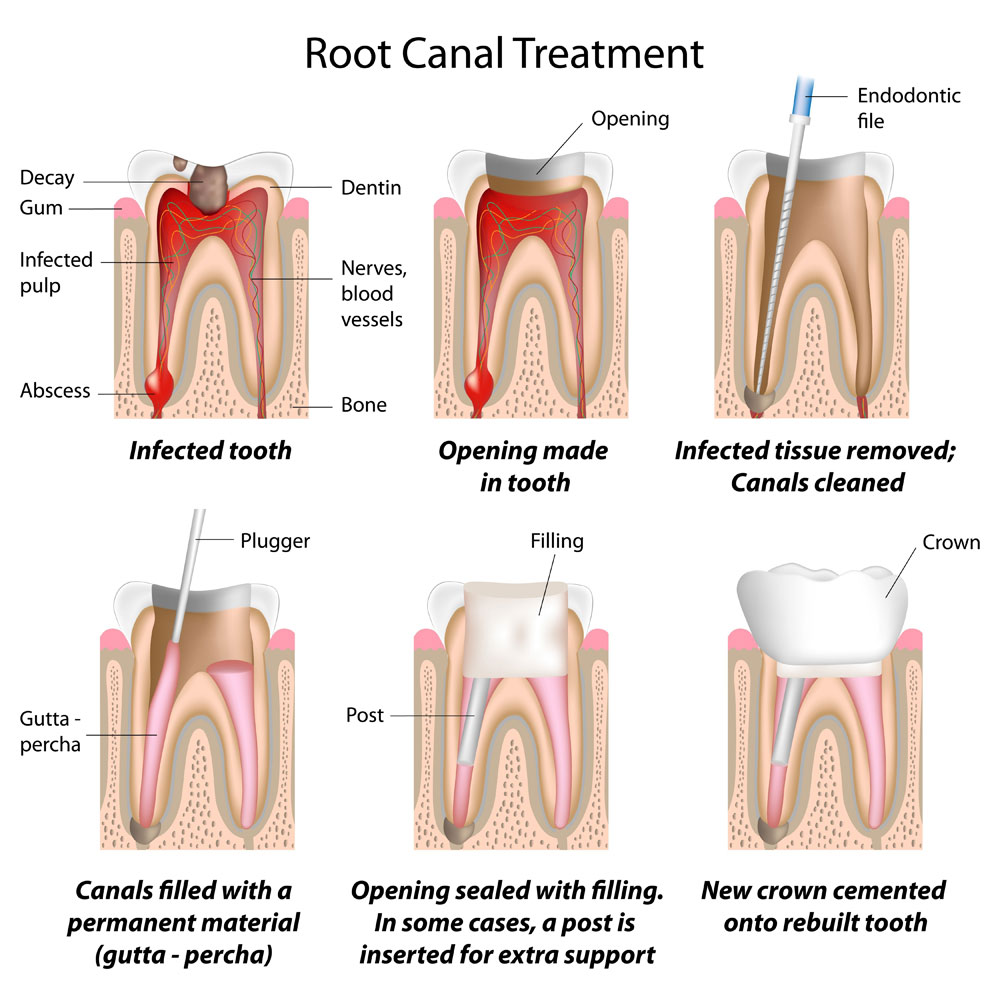Root Canals
You Don’t Have To Dread The Words “Root Canal”
When a tooth has been damaged by decay or an accidental trauma, it can sometimes be too far gone to be repaired with a filling. Additionally, if the tooth has become infected, it may also require root canal treatment. If you think you may need a root canal, The Smile Anchorage can be reached at (502)451-1400
Many patients dread hearing the words “root canal”. A root canal procedure should be music to your ears if you are in pain from a dental infection or trauma. The root canal procedure will remove the nerve from the tooth, and you can get back to your normal life right away. A root canal ends pain, it doesn’t cause pain.
What Exactly Is A Root Canal?
If you think of the root of your tooth as a pencil, a root canal procedure is the removing of the lead from the pencil and replacing it with something other than lead.
The inside of your tooth has living tissue. This includes a blood supply, lymphatics and nerves. When your tooth becomes infected from any number of causes (a big cavity, fractured tooth, large fillings that are too close to the pulp) it will require that the living portion of the inside of the tooth (the pulp) be removed and filled in with a special filling material called gutta percha. Gutta Percha is basically a rubber like filling material that seals off the inside of the tooth and helps to prevent further infection. After the tooth has been filled with gutta percha, it is usually (but not always) restored with a crown. Occasionally the tooth can be restored with just a filling.
Root canal treatment allows you to keep your own tooth, so you don’t have a missing tooth in your smile.
The Steps To Root Canal Treatment
The root canal procedure consists of a few steps:
 Once it is determined that you need a root canal, the first step is anesthesia. While your tooth is getting numb, we will place a rubber dam over the tooth to keep it clean during the procedure. A rubber dam is a small sheet of thin rubber that is very flexible, and allows us to separate the rest of the mouth from the tooth where we are performing the root canal.
Once it is determined that you need a root canal, the first step is anesthesia. While your tooth is getting numb, we will place a rubber dam over the tooth to keep it clean during the procedure. A rubber dam is a small sheet of thin rubber that is very flexible, and allows us to separate the rest of the mouth from the tooth where we are performing the root canal. Once isolated, we make a small opening in the tooth, as well as removing any and all decay that was present in the tooth. This small hole gives us access to the inside of the tooth, where the nerve resides.
Once isolated, we make a small opening in the tooth, as well as removing any and all decay that was present in the tooth. This small hole gives us access to the inside of the tooth, where the nerve resides. A series of small instruments are used to clean the inside of the tooth, removing all of the living tissue. While the instruments are being used, the inside will also be rinsed often with solutions for cleaning the living tissue from inside of the tooth.
A series of small instruments are used to clean the inside of the tooth, removing all of the living tissue. While the instruments are being used, the inside will also be rinsed often with solutions for cleaning the living tissue from inside of the tooth. After the canal is cleaned and dried, a sealer is applied and the canal (or canals) will be filled with gutta percha, the rubber like filling material.
After the canal is cleaned and dried, a sealer is applied and the canal (or canals) will be filled with gutta percha, the rubber like filling material. The small opening made in the tooth will be filled, either with a temporary filling or with a final filling material. If the tooth will require a crown, we will prepare the tooth for the crown at this time.
The small opening made in the tooth will be filled, either with a temporary filling or with a final filling material. If the tooth will require a crown, we will prepare the tooth for the crown at this time.

The Alternatives To Root Canal Treatment
There are alternatives to having a root canal. The first of those is to have the tooth removed, and leave an empty space where the tooth once was located. We do not recommend leaving open spaces in your smile, as problems will surely arise from dooing so. The teeth left on either side of the empty space can begin to shift and move, creating malocclusion (bad bite), periodontal problems (bone loss, gum disease) and other problems.
The other alternatives are to have the tooth removed, and replace the missing tooth. There are a few ways to replace missing teeth and they include partials or dentures, bridges or implants.
If you are a good candidate for dental implants, then this is generally the best option for replacing a missing tooth. Unlike partials or dentures, implants are not removable and act like your natural teeth. Bridges are a good second option, but have some drawbacks compared to dental implants.
